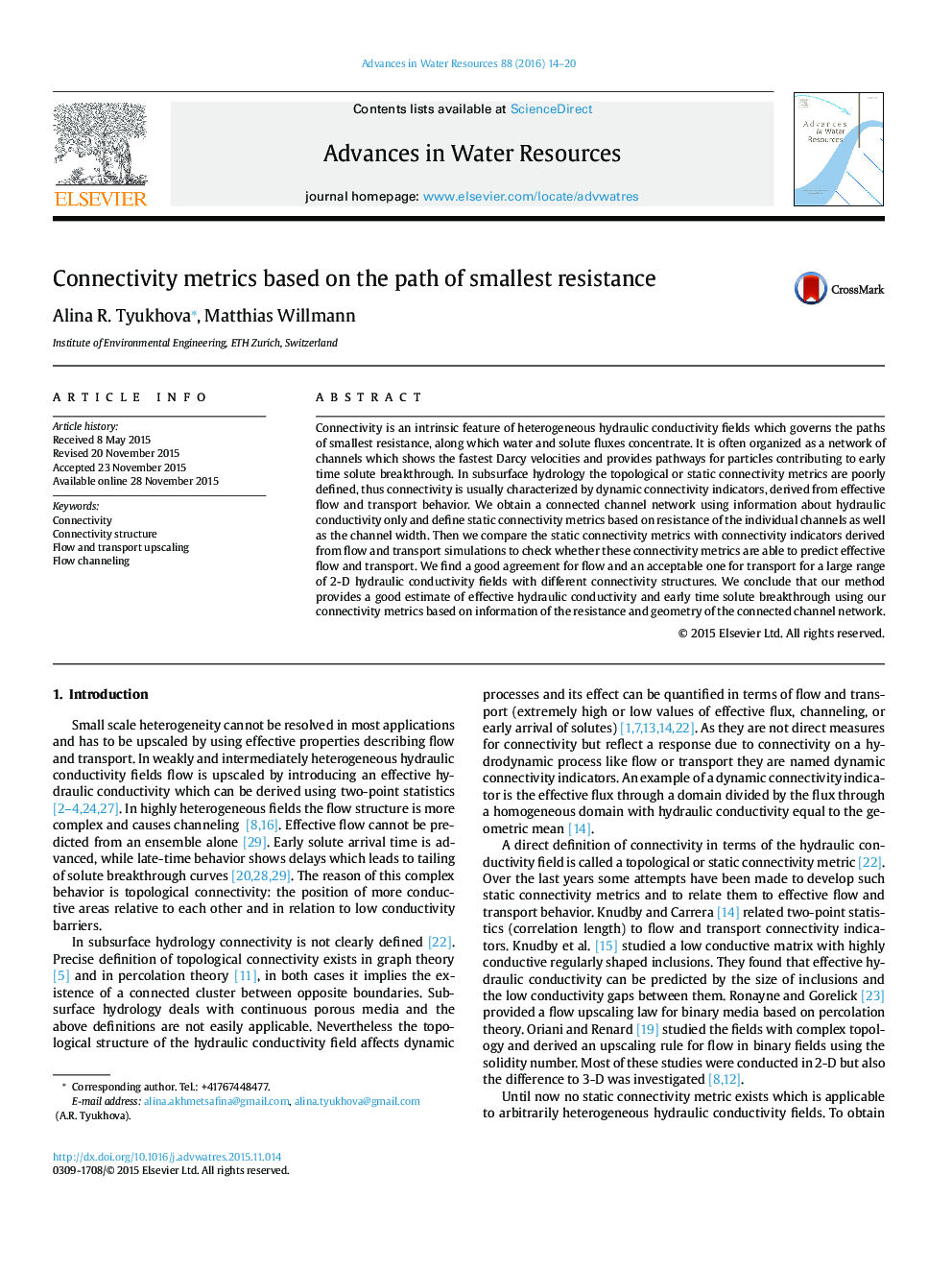| Article ID | Journal | Published Year | Pages | File Type |
|---|---|---|---|---|
| 4525318 | Advances in Water Resources | 2016 | 7 Pages |
•We introduce two new static connectivity metrics for highly heterogeneous aquifers.•They are based on the smallest resistance and the connectivity structure of a K field.•The new metrics show a good agreement with common dynamic connectivity indicators.•They can be used to predict effective flux and early solute arrival time.
Connectivity is an intrinsic feature of heterogeneous hydraulic conductivity fields which governs the paths of smallest resistance, along which water and solute fluxes concentrate. It is often organized as a network of channels which shows the fastest Darcy velocities and provides pathways for particles contributing to early time solute breakthrough. In subsurface hydrology the topological or static connectivity metrics are poorly defined, thus connectivity is usually characterized by dynamic connectivity indicators, derived from effective flow and transport behavior. We obtain a connected channel network using information about hydraulic conductivity only and define static connectivity metrics based on resistance of the individual channels as well as the channel width. Then we compare the static connectivity metrics with connectivity indicators derived from flow and transport simulations to check whether these connectivity metrics are able to predict effective flow and transport. We find a good agreement for flow and an acceptable one for transport for a large range of 2-D hydraulic conductivity fields with different connectivity structures. We conclude that our method provides a good estimate of effective hydraulic conductivity and early time solute breakthrough using our connectivity metrics based on information of the resistance and geometry of the connected channel network.
